Photos by Santiago Navarro F
The Nasa are one of 102 Indigenous peoples of Colombia who were pushed up into the mountains by European conquest in the 16th century, and later by massive sugarcane plantations. Since 2015, they have been carrying out direct actions in which they cut down cane fields, plant organic crops in their place, and allow the native vegetation to cover additional areas within the same reclaimed lands. They call this action “the liberation of Mother Earth,” an initiative that has cost them at least eight lives and approximately 600 evictions by Colombian state security forces trained by the U.S. Southern Command, according to people interviewed.
“They arrive as if they were going to war, with armed state forces,” a member of the Liberation of Mother Earth Movement (Movimiento de Liberación de la Madre Tierra), who asked to remain anonymous for their safety, told Avispa Mídia. “They’ve killed eight of our comrades. They have repressed us heavily.”
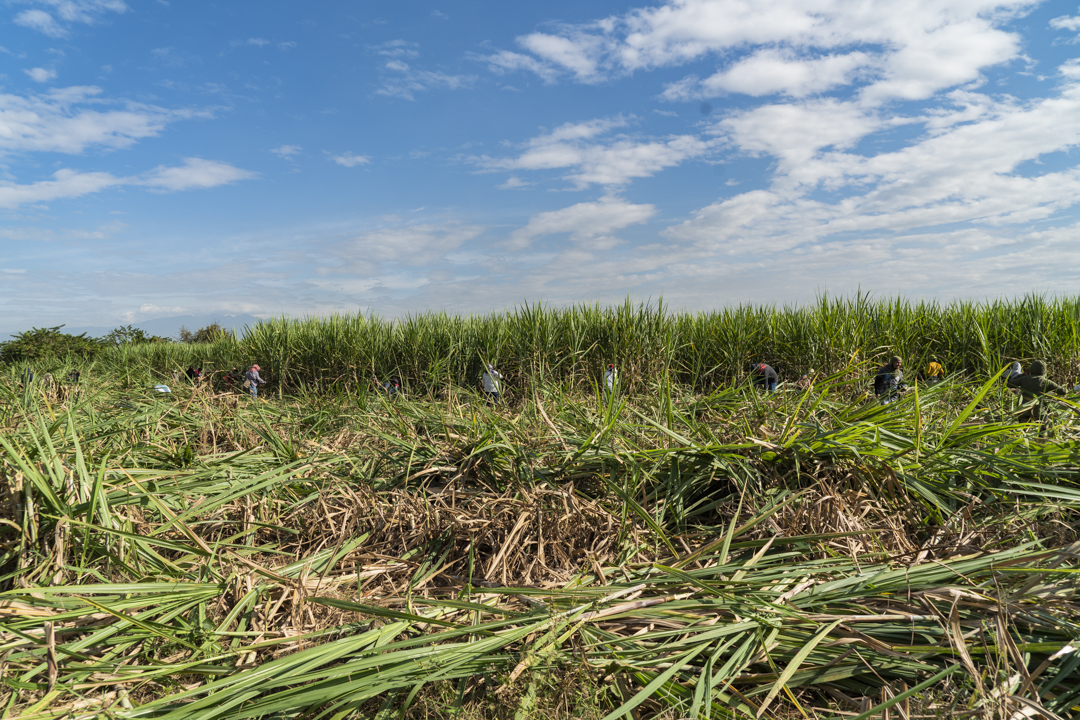
One part of the Nasa people’s ancestral territory is located in the north of Cauca, a department (the Colombian equivalent of a state) in southern Colombia. This region is covered by 250,000 hectares (approximately 617,000 acres) of sugarcane, destined primarily for ethanol production, which is later mixed with other fuels for use in automobiles.
According to the Nasa people’s own research, this giant operation is fed by more than 25,000 water sources that come from the mountains and 2,000 wells that were drilled in the surrounding areas. It consumes 25 million liters (6.6 million gallons) of water per second. This ecological travesty has pushed the Nasa to recover their ancestral lands.
“Modelling for sustainability assessment in the Bioethanol Supply Chain,” published in 2017 by Danny Waldir Ibarra Vega, argues that bioethanol production in Colombia has increased exponentially from 100,000 liters per day in 2006 to more than 200,000 liters per day in 2017.
“The time came to liberate the land,” said one activist, who introduced himself only as José for security reasons. “The mining, petroleum and monocrops … are businesses that benefit a few people. And it must be liberated because the Earth has one purpose, which is to generate life and not death.”
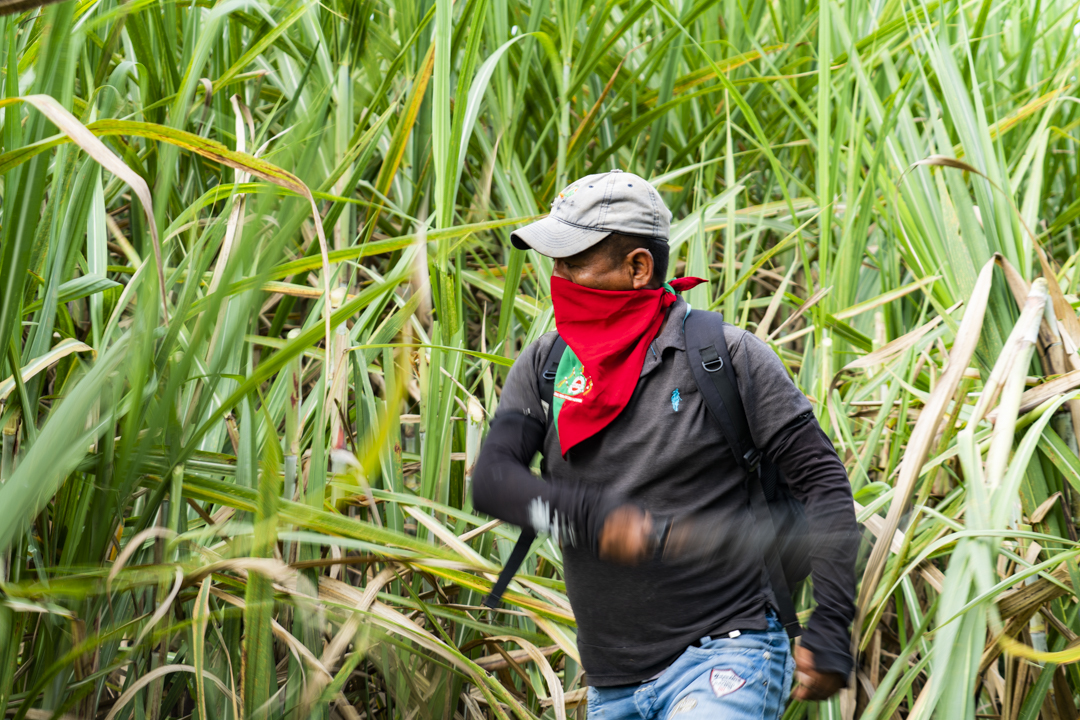
“The goal of this action is to let the land return to nature, because that’s how diversity will return, the birds will return, the microorganisms and the plants that were considered [the cane planters’] enemies. The trees will return,” José told Avispa Mídia.“The time came to liberate the land. It must be liberated because the Earth has one purpose, which is to generate life and not death.”
In addition to reclaiming their ancestral lands, they are also regaining their food sovereignty. They have carried out another direct action with the planted and harvested crops: freely giving out food in the poorest neighborhoods of the cities of Cali, Medellín, Manizales and Bogotá. They call this initiative the “Food March,” whose goal, they say, is “a meeting of the dispossessed.” Since the march, dozens of youth collectives and working-class neighborhoods have decided to break up the cement ground and start growing food.
Mirrors
In 2017, the Nasa people convened a first meeting with other people from Colombia and around the world involved in similar actions related to climate change and the reconstruction of territories razed by extractivism, monocrops and the real estate sector.
From August 8 to 11, 2019, hundreds of people arrived in the north of Cauca to participate in the Third International Meeting of Liberators of Mother Earth (Tercer Encuentro Internacional de Liberadores y Liberadoras de la Madre Tierra). They patiently sharpened their machetes as they exchanged knowing looks. With a ceremonial rod, the traditional Nasa leaders danced in single file — together with collectives of anarchists, environmentalists and others who had made the journey — a ritual by which they prepared themselves to cut down one more sugarcane plantation.
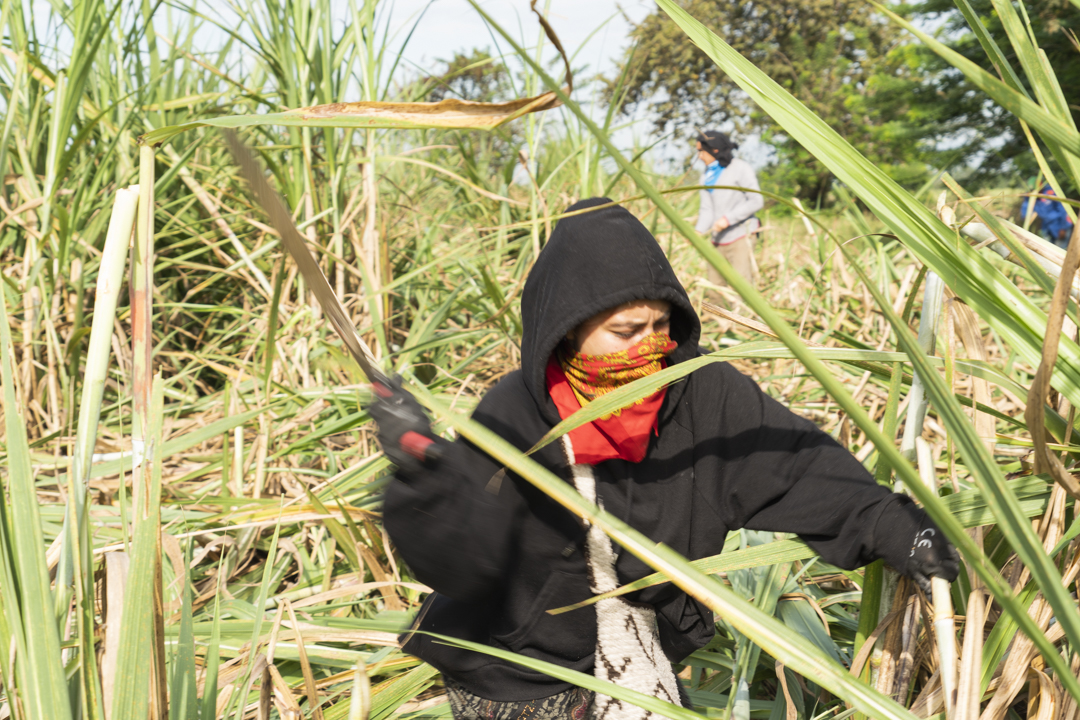
Machete in hand, Fabián Serrano from the Imprenta Comunera collective answered the call. “Liberation must also come from thought and from what’s practical. That’s why we’ve come: to nourish ourselves and learn from these practices, but above all to learn to organize ourselves,” Serrano told Avispa Mídia. “Because we have to take up other actions from our own places, we have to see each other as we see ourselves, like a mirror. Because it’s in the cities that the climate catastrophe has started to be felt with greater intensity.”
Ana María Carlón belongs to the Urban Collective of Mother Madness (Colectivo Urbano de la Madre Locura). “Mother Earth is also in the cities; she’s just covered in cement. But in practicing urban agriculture and taking the cement off of her, we are also liberating her,” María Carlón said. “Beyond this, though, there is excessive consumption in urban areas, which I consider one of the worst forms of killing Mother Earth, because the metabolism of the market functions to the extent that we consume, and Indigenous peoples’ territories are destroyed correspondingly.”“The liberation of Mother Earth is not up for negotiation.”
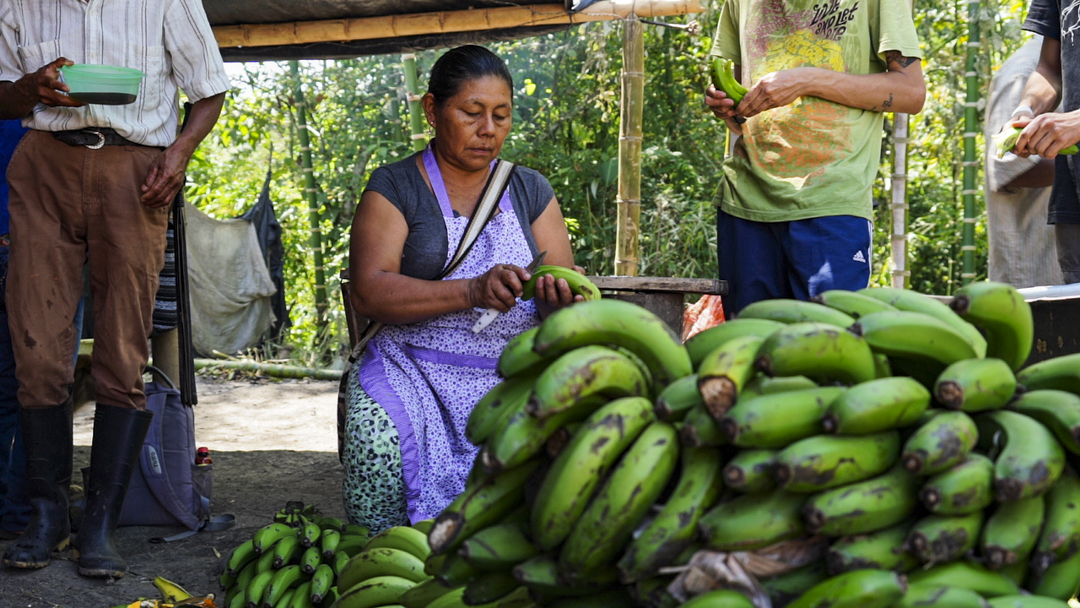
During the event, participants shared their expertise in education, health and traditional medicine, as well as knowledge and experience that have helped the Nasa self-organize and resist. “Indigenous peoples are showing us how to combat climate change and let the land heal by letting it live. We reaffirm that the principal culprit of this ecological imbalance that we are living through today is, first of all, the form of life that has been imposed on us, namely, capitalism,” said María Carlón.
The Foundation of the Regional Indigenous Council of the Cauca (CRIC) was created in 1971. The CRIC decided to recover and expand its territories, strengthening self-governments and refusing to pay taxes to landowners. However, 21 indigenous people who had recovered their lands in the Nile, a municipality of Caloto, were killed in what is known as the Nile Massacre of 1971. “Since this proposal, more than 130,000 hectares (321,000 thousand acres) have been taken back,” according to José. “The government betrayed us more than once with agreements they didn’t follow through on. Today, those of us who take up the mantle of liberators don’t negotiate with the government and we want nothing to do with them. We seek to strengthen our own autonomy with the knowledge that our ancestors have left us. The liberation of Mother Earth is not up for negotiation.”

Attendees of the meeting last August unanimously supported remaining outside of state institutions and moving toward other forms of resisting the devastation wreaked by industrial sugarcane production.
“What we’re living through is a crisis of civilization,” said Nadia Humaña, from the Dialogue Commission of Southern Bolívar, Central and Southern Cesar (Comisión de Interlocución del Sur de Bolívar, Centro y Sur del Cesar). “It’s not just economic or just social or just environmental. Everything is connected.”
“Our challenge,” said Humaña, “is to think about these problems in an integrated way, confront them, and come up with strategies that take aim at the central points of this system. It’s also necessary to rethink the role of the state and to consider if it’s possible to reverse this destruction.”
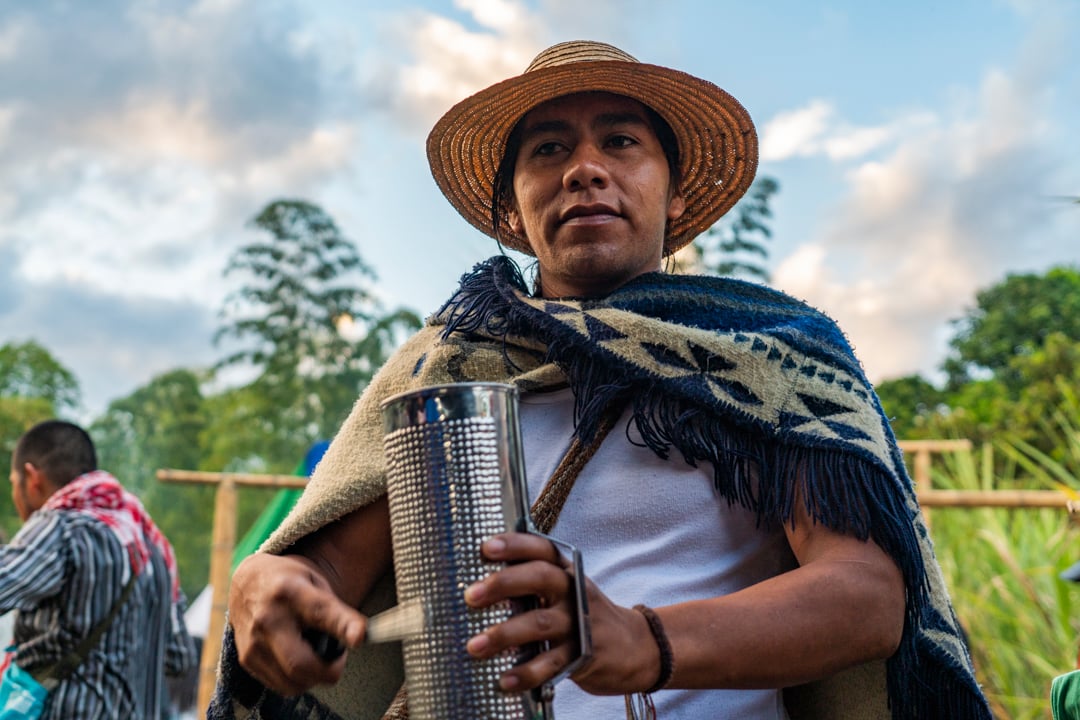
Assassinations
The process of liberation has not been easy. While the Third Encuentro of Liberators of Mother Earth was taking place from August 8 to 11, 2019, in northern Cauca, the assembled fell silent upon learning that two members of the Indigenous Guard from the San Francisco reservation in the municipality of Caloto had been killed by an armed group. Five people were also wounded, among them a 7-year-old boy.“The government says that these lands have to join in the development of capitalism. We don’t want to join; we want to liberate the land and live simply.”
“Who did it? It’s an armed group that’s trying to control and manage the drug trade and this has us very concerned, because the threats continue to be very frequent in our territory,” said one of the traditional leaders of the Nasa people, who spoke anonymously for security reasons.
Murders of Indigenous Nasa people have increased exponentially since the peace agreement between the Revolutionary Armed Forces of Colombia (FARC, Fuerzas Armadas Revolucionarias de Colombia) and the government. “So far in 2019,” said Alberto Brunori, representative of the Office of the UN High Commissioner for Human Rights in Colombia, “The Office has received information on the homicides of 36 members of the Nasa people in the north of Cauca, approximately 53 death threats and eight attacks. In comparison with the previous year … today at the same date (August 2018) there are nine more homicide cases.” But these figures have risen by nearly a dozen in recent months. On October 29, 2019, alone, five indigenous authorities of the community of Tacueyó were killed by FARC dissident groups.
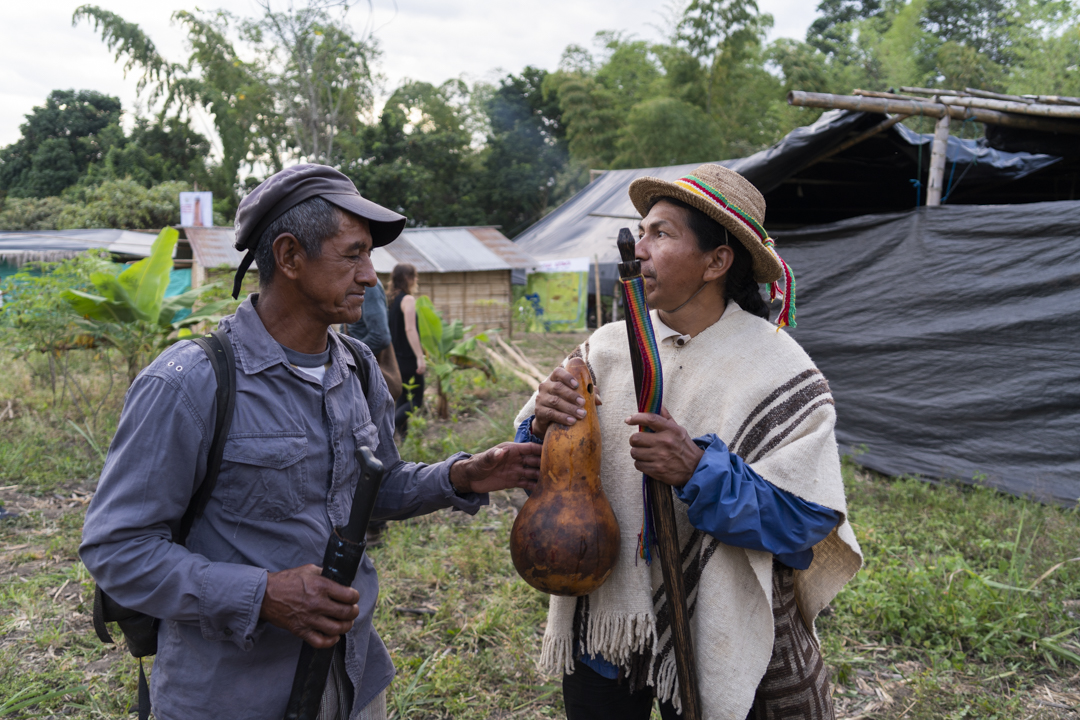
The Indigenous people who live in the north of Cauca attribute this violence in part to the war that has dragged on for more than 50 years between various governments and the FARC. “For 50 years, the government has told us that we’re FARC collaborators, and the guerrillas have said the opposite,” José said. “Both sought to justify their actions and, in this attempt at justification, murdered many of our brothers and sisters. But we didn’t fall into this game of war, because we see that it’s a business. That’s where the murders began. With this peace agreement, the dispute over our ancestral lands has intensified.”
Since the signing of the Peace Agreement between FARC and the government, the United Nations Security Council in Colombia had verified 226 murders through March 2019.The accord led to the formation of armed dissident groups that splintered from the FARC, including right-wing paramilitary groups like The Black Eagles (Las Águilas Negras) — a decade-old moniker adopted by many disparate groups to spread fear — and an increased presence of organized crime groups, who “are fighting over territory for marijuana and poppy cultivation,” said José.
In 1991 a new constitution was enacted in Colombia that included Indigenous peoples’ rights, but according to the Nasa peoples’ documentation, between 1991 and 2005, “15 massacres were carried out in those years, with more than 500 dead.”“We’re taking the chains off of the land, but also from our hearts and minds. We’re building autonomy and rebuilding life.”
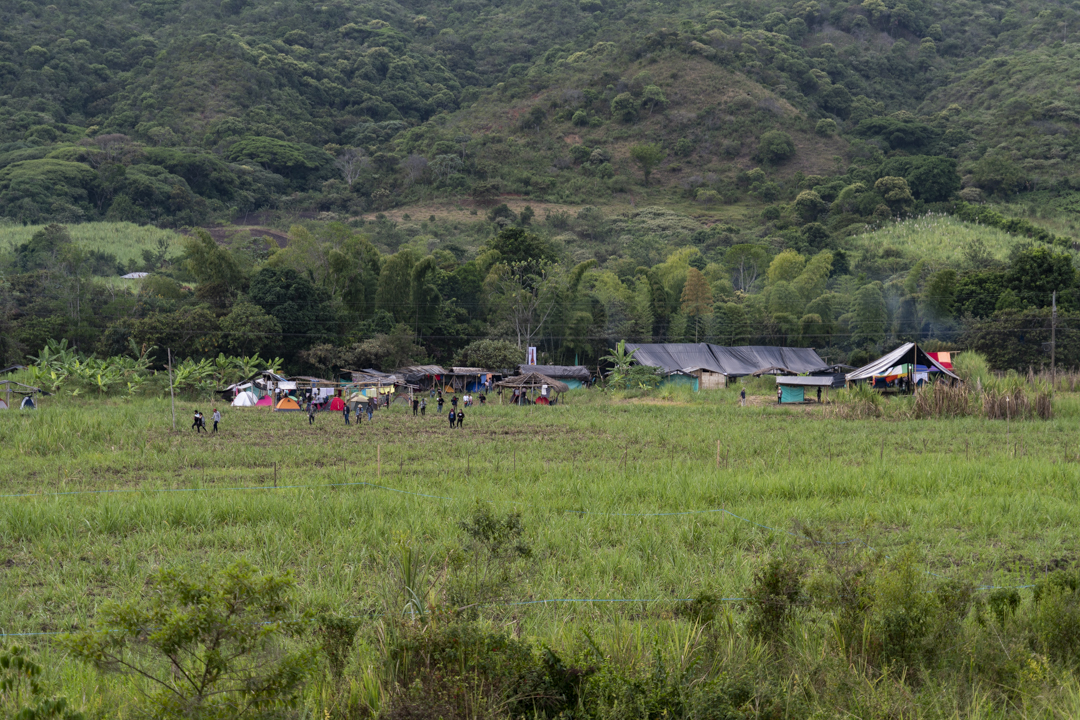
The state of the land itself also comes into conflict with interests that are incentivizing other monocrops, such as the Territories of Opportunity, Program of Cooperation project (Territorios de Oportunidad, Programa de Cooperación), which is expanding avocado, coffee, cacao and livestock production. Helped by resources from the United States Agency for International Development, this program “seeks to strengthen the capacity of rural communities affected by the armed conflict,” according to the government of Cauca.
The Nasa and the Liberators of Mother Earth believe that with these development policies, Indigenous people will continue to remain repressed. “The new government says that they’re not going to buy even one more meter of land for Indigenous peoples and they will neither create nor recognize more collective territories for Indigenous peoples,” said José. “On the contrary, the government says that these lands have to join in the development of capitalism. We don’t want to join; we want to liberate the land and live simply.”
Diana, a young Indigenous woman who introduced herself only by her first name, is responsible for the political education of the young people in this village of liberators. “We’re on maximum emergency alert because they’re killing us, and it’s so painful that this is happening in the north of Cauca,” she told Avispa Mídia. “Their development policies — and the planting of illicit crops that the government supports — are destroying our way of life.”
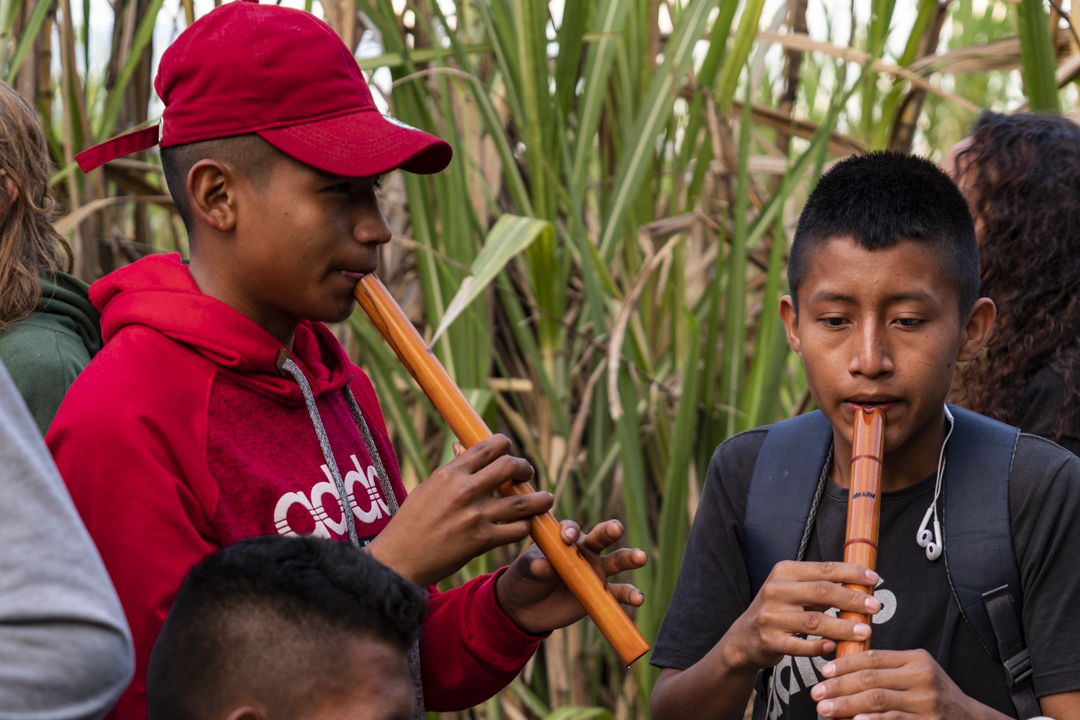
According to Diana, those who have died in this struggle are mainly youths — the same people who have taken charge of strengthening the organizational process of their community and held firm in the liberation of Mother Earth. “The community cries for its dead, its wounded, and the destroyed crops, but they return and rise up with strength to keep cutting cane and planting food,” she said. “Because when we do so, we’re taking the chains off of the land, but also from our hearts and minds. We’re building autonomy and rebuilding life. We’re harvesting dignity.”
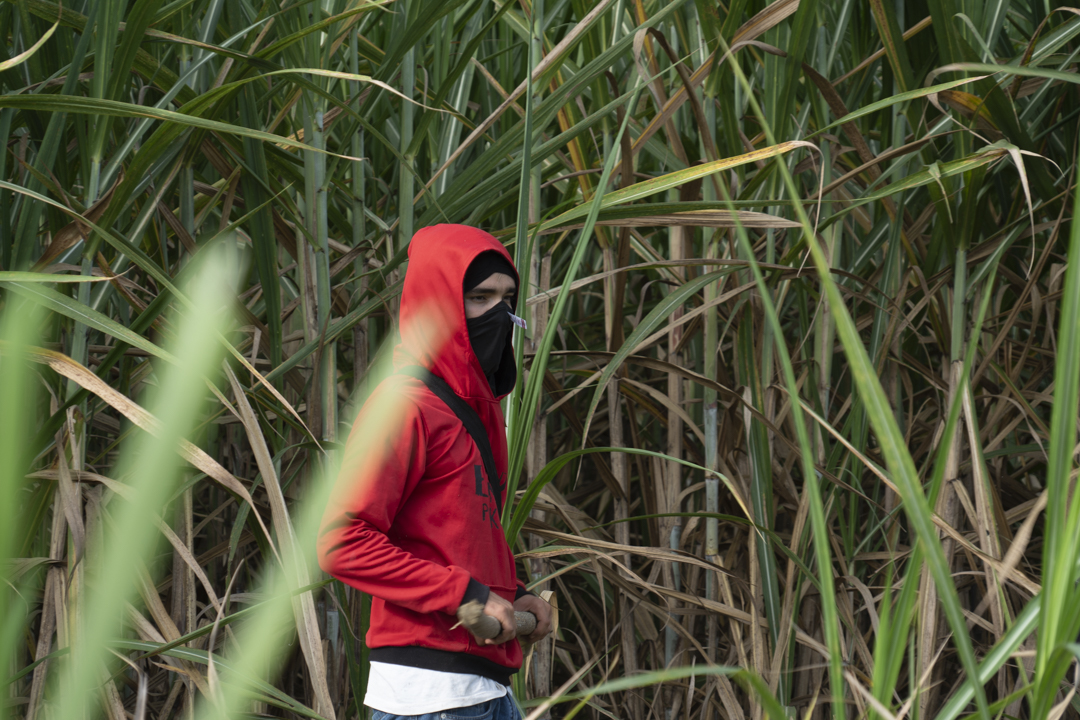
A version of this report was published in Truthout


